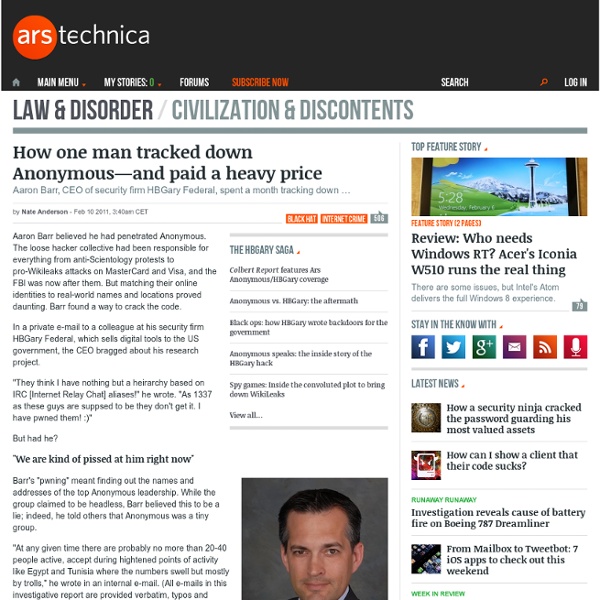TASC - Echelon 2
TASC, Inc. describes itself as "a renowned provider of advanced systems engineering, integration and decision–support services across the intelligence, defense, homeland security and federal markets." It's also a major target of our investigation due to correspondence discovered between HBGary Federal CEO Aaron Barr and TASC executives Al Pisani and John Lovegrove regarding their collaborative pursuit of the Romas/COIN contract, which was then held by Northrop Grumman . Throughout 2010, Barr exchanged dozens of e-mails with TASC executives as the two parties collaborated on building a team capable of winning the Romas/COIN contract away from Northrop; to a lesser extent, Mantech CEO Robert Frisbie was also involved in this effort, mostly in communication with Barr. The full report on Romas/COIN may be found at its page; below is a sampling of e-mails from the period. From: Aaron Barr <aaron@hbgary.com> To: Pisani, Albert A. Al, I met with Bob Frisbie the other day to catch up. Peter A.
How Aaron Barr Infiltrated Anonymous, and Why He Decided to Do It
Ars Technica's Nate Anderson has put together a long and fascinating report on the tumultuous recent history of Aaron Barr -- the security expert who successfully infiltrated Anonymous, and then got burned, after running to the FBI with his findings. Based on e-mails he sent before beginning his mission, it's clear that Barr's motives, from the very beginning, were profit-driven. A social media fanatic, Barr firmly believed that he could use data from sites like Facebook and LinkedIn to identify any hacker in the world, including members of Anonymous. "Hackers may not list the data, but hackers are people too so they associate with friends and family," Barr wrote in an e-mail to a colleague at HBGary Federal. Using several aliases, Barr began regularly dropping in on Anonymous' instant relay chat (IRC) forums, and, after setting up fake Facebook and Twitter accounts, attempted to unearth the members' true identities via social media.
Aaron Barr
HBGary is subsidiary company of ManTech International, focused on technology security. In the past two distinct but affiliated firms had carried the HBGary name: HBGary Federal, which sold its products to the US Federal Government,[3] and HB Gary, Inc.[4] Its other clients included information assurance companies, computer emergency response teams, and computer forensic investigators.[5] On February 29, 2012, HBGary, Inc. announced it was acquired by IT services firm ManTech International.[6] At the same time, HBGary Federal has been reported to be closed.[6] History[edit] The company was founded by Greg Hoglund in 2003.[1] In 2008, it joined the McAfee Security Innovation Alliance.[5] The CEO made presentations at the Black Hat Briefings, the RSA Conference, and other computer security conferences.[7][8] HBGary also analyzed the GhostNet and Operation Aurora events.[3][7] As of 2010, it had offices in Sacramento, California, Washington, D.C., and Bethesda, Maryland.[2] Fallout[edit]
A sinister cyber-surveillance scheme exposed | Barrett Brown
When President Eisenhower left office in 1960, he provided the American people with a warning. "In the councils of government, we must guard against the acquisition of unwarranted influence, whether sought or unsought, by the military-industrial complex. The potential for the disastrous rise of misplaced power exists and will persist." Sixty years later, the military-industrial complex has been joined by another unprecedented centre of what has increasingly proven to be "misplaced power": the dozens of secretive firms known collectively as the intelligence contracting industry. Last February, three of these firms – HBGary Federal, Palantir and Berico, known collectively as Team Themis – were discovered to have conspired to hire out their information war capabilities to corporations which hoped to strike back at perceived enemies, including US activist groups, WikiLeaks and journalist Glenn Greenwald.
hbgary



